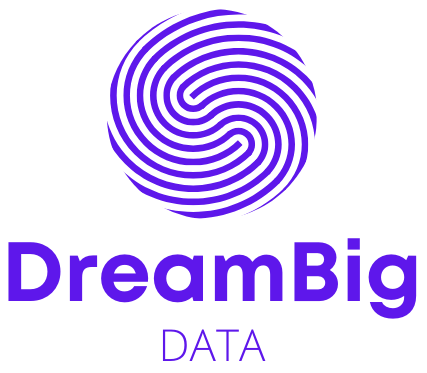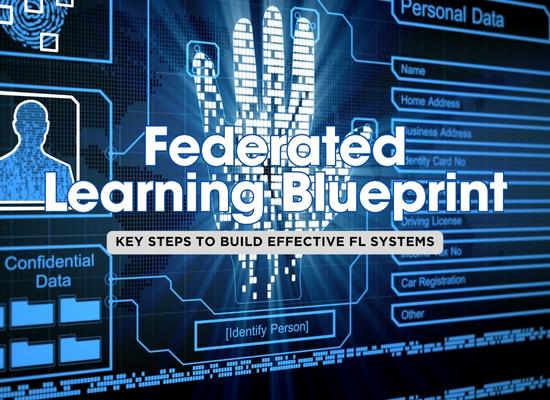Imagine training powerful machine learning models without ever sharing sensitive data. That’s the promise of Privacy-Preserving Federated Learning (PPFL)—a cutting-edge approach that combines decentralized machine learning with advanced privacy techniques. In an era where data breaches and privacy concerns dominate headlines, PPFL offers a solution that balances innovation with security. Whether it’s enabling hospitals to collaborate on cancer research or banks to detect fraud, this technology is reshaping how we leverage big data without compromising privacy.
1. What Is Federated Learning? 🤔
Federated learning (FL) is a decentralized method of training machine learning models. Instead of pooling raw data in a central repository, the models are trained locally on multiple devices or across various organizations. After training, only the model updates (not the raw data) are shared and aggregated to create a global model.
🌟 Key Benefits of Federated Learning:
- Data Stays Local: Avoids the risk of breaches by keeping raw data on the source device or system.
- Efficiency: Reduces the need for data transfer, which saves bandwidth and time.
- Collaboration Without Risk: Allows competitors or institutions with sensitive data to collaborate without exposing their proprietary information.
📌 Real-Life Example:
Google uses federated learning in Android devices to improve features like predictive text and voice recognition without accessing personal user data.
2. Why Privacy Matters in Federated Learning 🔒
Even though federated learning minimizes the sharing of raw data, privacy risks still exist. For instance, the model updates shared between devices or organizations can unintentionally expose sensitive patterns or insights about the underlying data.
🔑 Why Privacy Is Crucial:
- Regulatory Compliance: Laws like GDPR, HIPAA, and CCPA mandate stringent protection of sensitive information.
- Trust Building: Privacy-preserving mechanisms encourage more organizations to participate in federated learning collaborations.
- Security Against Inference Attacks: Without privacy measures, malicious actors could reverse-engineer model updates to reconstruct sensitive data.
🛡️ Privacy Techniques in Action:
- Differential Privacy:
- Introduces random “noise” to data before sharing updates, making it mathematically impossible to identify individuals.
- Ensures a balance between model accuracy and privacy.
- Secure Aggregation:
- Aggregates model updates in a way that ensures no single participant’s data can be deciphered, even by the aggregator.
📌 Real-Life Example:
In healthcare, differential privacy enables hospitals to share model insights on rare diseases without revealing any patient data.
3. The Role of Differential Privacy 📊
Differential privacy is a cornerstone of privacy-preserving federated learning. It ensures that the model’s outputs—whether updates or results—do not reveal sensitive information about any individual data point.
🌟 How It Works:
- Noise is added to the data or model updates, making it statistically impossible to identify specific contributors.
- This “noise” ensures that even if a malicious party gains access to the shared updates, they cannot reverse-engineer sensitive data.
🔑 Key Applications:
- Healthcare: Enables researchers to collaborate on sensitive patient data, such as rare disease cases, without compromising privacy.
- Finance: Banks can train fraud detection models across institutions while maintaining customer confidentiality.
📌 Balancing Act:
The challenge lies in finding the right level of noise. Too much noise reduces the model’s accuracy, while too little may compromise privacy. Differential privacy tools like TensorFlow Privacy help address this balance.
💡 Takeaway: Differential privacy empowers organizations to participate in federated learning without fear of exposing sensitive data, opening the door for secure and large-scale collaborations.
4. Encryption Techniques in Federated Learning 🔐
Encryption ensures that even if data or updates are intercepted, they remain unintelligible to unauthorized parties. Federated learning relies on advanced encryption methods to maintain privacy throughout the process.
🔒 Top Encryption Techniques:
- Homomorphic Encryption:
- Allows computations to be performed on encrypted data without decryption.
- For example, banks can securely train fraud detection models across encrypted customer datasets without revealing account details.
- Secure Multi-Party Computation (MPC):
- Enables multiple parties to jointly compute a function while keeping their individual inputs private.
- Widely used in federated learning to aggregate model updates without exposing individual contributions.
🌟 Why It Matters:
- Data Integrity: Encryption ensures that updates remain untampered, preserving the integrity of the model.
- Global Security: Protects data even during transmission, minimizing vulnerabilities in distributed systems.
📌 Real-Life Example:
IoT manufacturers use homomorphic encryption to train models across smart devices, such as wearables, while preserving user privacy.
5. Federated Learning for Healthcare Data 🏥
Federated learning is transforming how sensitive healthcare data is leveraged for breakthroughs in medical research, diagnosis, and treatment, without compromising patient privacy.
🌟 Why It’s a Game-Changer:
- Collaboration Without Sharing Data: Hospitals and research institutions can train machine learning models collaboratively without pooling sensitive patient information.
- Disease Prediction: Federated learning enables models to analyze patterns across multiple institutions to predict diseases more effectively, especially rare conditions that require large datasets.
🔑 Real-Life Use Case:
- Owkin (AI for Healthcare): Owkin, a startup, uses federated learning to train machine learning models across hospitals in Europe, focusing on cancer research while ensuring patient data remains on-site.
💡 Key Challenges:
- Ensuring consistent data quality across institutions.
- Managing computational resources for training models locally.
6. Challenges in Privacy-Preserving Federated Learning ⚠️
While the technology is promising, it faces significant challenges that can hinder widespread adoption and implementation.
🌟 Top Challenges:
- Communication Overhead:
- Federated learning involves frequent transmission of model updates, which can create bandwidth issues, especially in resource-limited environments.
- Example: IoT devices like smartwatches may struggle with federated learning due to limited computational power and connectivity.
- Model Inversion Attacks:
- Malicious actors can attempt to reconstruct original data by analyzing model updates. This threat undermines privacy unless countered with strong techniques like differential privacy or encryption.
- Example: In academic studies, researchers have demonstrated the potential to reconstruct sensitive data (e.g., images or medical records) from shared gradients.
💡 What’s Being Done:
- Advanced encryption techniques and secure aggregation methods are being refined to address these vulnerabilities.
- Research into efficient communication protocols, such as compression algorithms, is reducing overhead.
7. Real-World Applications of Privacy-Preserving Federated Learning 🌐
Federated learning is already being implemented in industries where privacy is critical, demonstrating its potential to solve real-world problems without compromising sensitive data.
🌟 Key Applications:
- Finance:
- Banks use federated learning to detect fraudulent transactions across multiple institutions without sharing customer details.
- Example: SWIFT, the global financial messaging service, has explored federated learning for fraud detection in cross-border payments.
- IoT (Internet of Things):
- Smart devices like wearables and smart home systems use federated learning to personalize user experiences while keeping data local.
- Example: Federated learning powers Google’s Gboard keyboard, improving predictive text and voice recognition without sending user data to the cloud.
- Telecommunications:
- Mobile network operators train models to predict network demand and optimize infrastructure without accessing individual user data.
8. The Future of Privacy-Preserving Federated Learning 🚀
As federated learning evolves, it’s poised to reshape data collaboration across industries, driving innovation while maintaining privacy.
🌟 What Lies Ahead:
- Advanced Cryptographic Techniques:
- Continued advancements in homomorphic encryption and secure multi-party computation will enhance privacy and security.
- Blockchain integration may offer immutable and transparent systems for federated learning collaborations.
- Standardization:
- Development of global standards and frameworks will make federated learning more accessible and interoperable.
- Example: Initiatives like OpenMined aim to create open-source frameworks for privacy-preserving AI.
- Wider Adoption in Sensitive Fields:
- Federated learning will expand into sectors like government, legal systems, and defense, where privacy and security are paramount.
💡 Key Takeaway:
With growing concerns over data privacy and increasing regulations, federated learning combined with privacy-preserving techniques will likely become a standard in big data analytics, enabling collaboration without compromise.
Building Federated Learning Systems: Best Practices for Privacy and Efficiency
Federated learning (FL) is a transformative technology that enables organizations to collaboratively train machine learning models without sharing sensitive data. However, implementing an effective FL system requires careful planning, robust infrastructure, and a deep understanding of privacy-preserving techniques. This guide provides actionable best practices to help organizations deploy federated learning systems that balance privacy, efficiency, and performance.
1. Setting Up Federated Learning Infrastructure 🏗️
Building a reliable FL system starts with selecting the right infrastructure, which must support distributed data processing, secure communication, and efficient training.
Key Components:
- Hardware:
- Distributed devices or servers (e.g., edge devices like smartphones or IoT devices).
- High-performance GPUs or TPUs for efficient local training.
- Software Frameworks:
- Open-source platforms like TensorFlow Federated, PySyft, or OpenMined for deploying FL systems.
- Integration with privacy-preserving libraries for added security.
Best Practices:
- Scalability: Design infrastructure that scales with increasing data and devices.
- Network Optimization: Use communication protocols that minimize latency and bandwidth usage, such as gRPC or MQTT for IoT-based FL.
- Monitoring: Implement tools to monitor training progress and identify bottlenecks in real time.
💡 Example: Google uses FL for training predictive text on Android devices, utilizing edge devices with minimal hardware upgrades.
2. Balancing Privacy and Performance ⚖️
While FL prioritizes data privacy, achieving optimal model performance without compromising security is challenging.
Strategies:
- Data Quality Management:
- Ensure that data on local devices is pre-processed and labeled correctly for effective training.
- Model Optimization:
- Use lightweight model architectures that require fewer resources for local training.
- Implement techniques like knowledge distillation to reduce model size without sacrificing accuracy.
Key Metrics to Monitor:
- Model convergence speed (time to achieve target accuracy).
- Communication cost per training round.
- Privacy leakage risks from shared model updates.
📌 Tip: Regularly test your model with simulated datasets to assess the trade-off between accuracy and privacy.
3. Selecting Privacy-Preserving Techniques 🔒
Choosing the right privacy-preserving techniques is critical for protecting sensitive data while maintaining system efficiency.
Options and Use Cases:
- Differential Privacy: Adds noise to data or model updates to prevent the identification of individual contributors. Best for healthcare and finance where compliance with regulations like HIPAA or GDPR is essential.
- Secure Aggregation: Encrypts model updates during aggregation, ensuring no single participant’s data is exposed. Ideal for IoT applications or multi-party collaborations.
- Homomorphic Encryption: Allows computations on encrypted data without decryption, maintaining privacy during the training process. Suitable for highly sensitive industries like defense or national security.
💡 Best Practice: Combine multiple techniques (e.g., differential privacy and secure aggregation) to strengthen overall security.
4. Managing Compliance Across Jurisdictions 🌍
Federated learning often involves data spread across different regions, each with unique privacy laws and regulations.
Steps to Ensure Compliance:
- Understand Local Regulations:
- GDPR (Europe): Requires data minimization and explicit consent.
- HIPAA (US Healthcare): Mandates strict protection for patient data.
- PIPEDA (Canada): Emphasizes individual control over personal data.
- Data Residency:
- Store and process data within the jurisdiction it originates from to comply with regional laws.
- Use geo-restricted nodes to manage training locally.
- Regular Audits:
- Conduct compliance audits to ensure adherence to evolving regulations.
📌 Example: A multinational bank using FL for fraud detection ensures data remains within its originating country to meet local data sovereignty laws.
5. Evaluating Federated Learning Use Cases 💼
Not all problems are suited for FL. Assess potential applications to ensure that the benefits outweigh the costs and complexity.
Best Use Cases:
- Healthcare: Collaborating on disease prediction models while safeguarding patient confidentiality.
- Retail: Training personalized recommendation systems across customer data from multiple stores without pooling data.
- Finance: Fraud detection across banks or credit card companies while maintaining customer privacy.
- IoT and Edge Devices: Enabling real-time learning on devices like wearables or smart home systems.
Considerations for Success:
- Diverse Data Sources: FL works best when data from participating nodes is diverse but complementary.
- Infrastructure Cost: Evaluate if the cost of setting up FL infrastructure justifies the expected benefits.
💡 Key Takeaway: Use FL for applications where centralized data collection poses significant privacy, legal, or logistical challenges.
6. Future Trends and Innovations in Federated Learning 🚀
The field of FL is rapidly evolving, with innovations enhancing its usability and efficiency.
Emerging Trends:
- Blockchain Integration: Ensures transparency and immutability in FL collaborations.
- Energy-Efficient FL: Developing algorithms that reduce the computational burden on edge devices.
- Adaptive Federated Learning: Allows models to dynamically adjust to changes in data distribution across devices.
📌 Example: Researchers are exploring blockchain-backed FL for healthcare to provide tamper-proof and transparent audit trails.
Building a federated learning system requires more than just technical know-how—it demands careful planning, collaboration, and adherence to privacy standards. By focusing on infrastructure, privacy techniques, compliance, and use cases, organizations can unlock the full potential of FL while safeguarding sensitive data.
🔑 Final Tip: Start small with pilot projects and gradually scale your FL system as you refine its performance and privacy protocols. With the right strategies, federated learning can be a transformative tool for privacy-conscious big data applications.
Reference Links
National Institute of Standards and Technology (NIST) – Privacy and Federated Learning
An in-depth analysis of privacy risks and countermeasures in federated learning systems.
nist.gov
European Union Agency for Cybersecurity (ENISA) – Federated Learning in AI Security
Explores federated learning in the context of AI security and privacy regulations like GDPR.
enisa.europa.eu
IEEE – Privacy Preservation in Federated Learning
Technical papers and standards for implementing privacy-preserving techniques in federated learning.
ieee.org
Federal Trade Commission (FTC) – Data Privacy and Emerging Technologies
Insights into how federated learning can align with data privacy laws and consumer protection.
ftc.gov
World Economic Forum (WEF) – Privacy Enhancing Technologies in Data Collaboration
Discusses federated learning and other privacy-enhancing technologies for secure data sharing.
weforum.org



